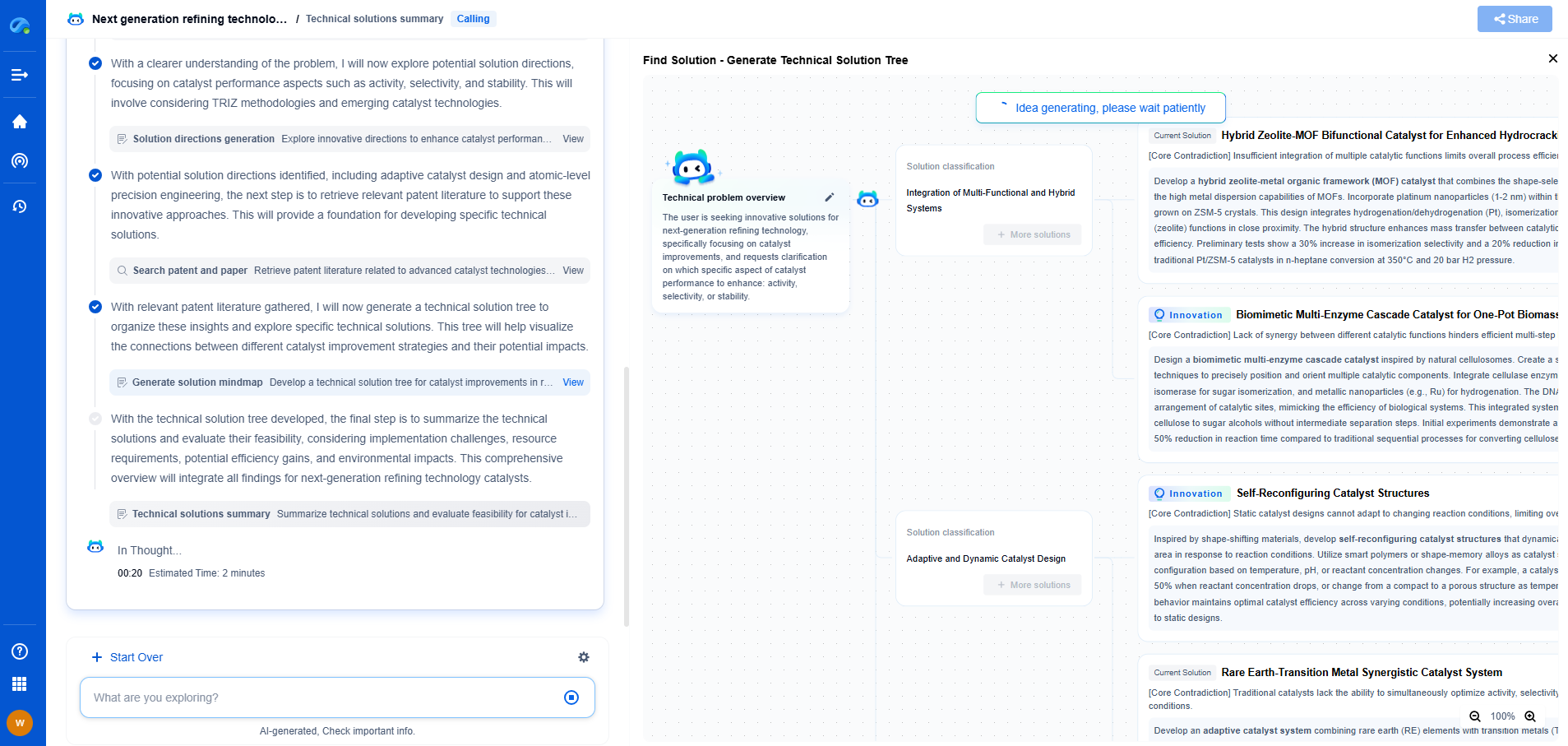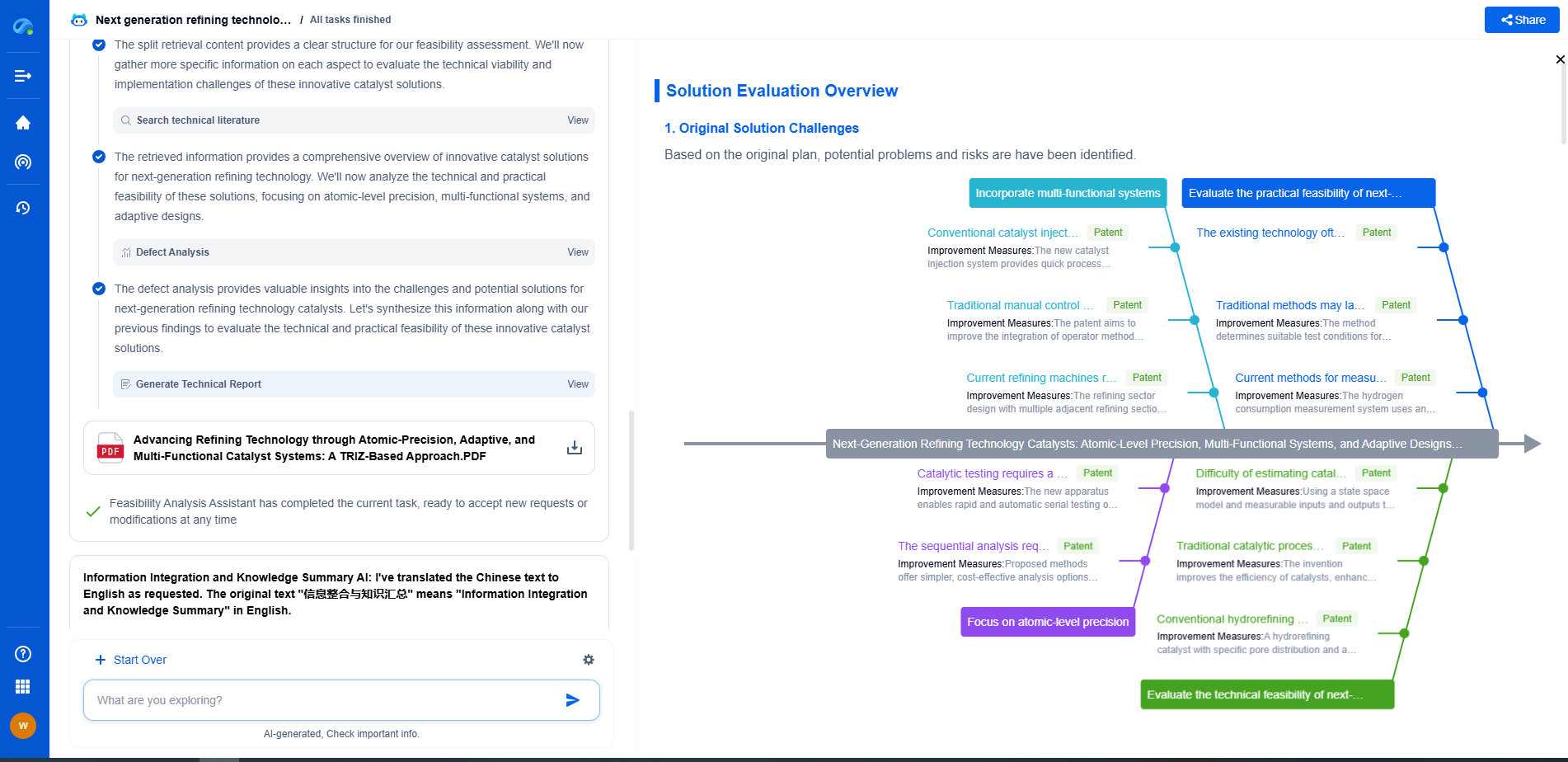How to Plot a Loss Curve and What It Means
JUN 26, 2025 |
In the world of machine learning and deep learning, understanding how a model learns and improves over time is crucial. One of the most powerful tools for assessing a model’s performance during the training process is a loss curve. A loss curve visualizes the model's learning process by plotting the loss value over epochs or iterations. In this blog, we will delve into how to plot a loss curve, interpret it, and understand its significance in the machine learning workflow.
Understanding Loss
Before diving into loss curves, it is essential to grasp what "loss" means in the context of machine learning. The loss function quantifies how well a model’s predictions align with the actual labels. In essence, it measures the error or discrepancy between the predicted outputs and the true outputs. Different tasks require different loss functions; for instance, mean squared error is often used for regression tasks, while cross-entropy loss is common in classification problems. A lower loss value indicates a better-performing model.
Plotting a Loss Curve
Plotting a loss curve involves tracking the loss value over time as the model trains. Typically, this is done by plotting the loss on the y-axis and the number of epochs or iterations on the x-axis. Most machine learning frameworks, like TensorFlow and PyTorch, offer utilities to facilitate this process. Here’s a simple way to do it:
1. **Train the Model**: During training, record the loss at each epoch or iteration. If possible, store both training and validation losses for a comprehensive understanding.
2. **Use a Plotting Library**: Libraries like Matplotlib in Python are excellent for creating loss curves. You can set up your plot with labels and titles for clarity.
3. **Plot the Curve**: With the recorded loss values, plot the training loss and, if available, the validation loss on the same graph. This helps compare their trajectories over time.
Interpreting Loss Curves
Once plotted, loss curves provide insightful information about the model's learning process. Here’s how to interpret them:
1. **Convergence**: Ideally, the loss should decrease and stabilize, indicating that the model is learning well.
2. **Overfitting**: If the training loss decreases while the validation loss starts increasing, the model might be overfitting to the training data. This means it is capturing noise rather than learning the underlying pattern.
3. **Underfitting**: If both training and validation losses remain high, the model might be underfitting, suggesting it’s too simple to learn the data adequately.
4. **Learning Rate**: A curve that descends too slowly might indicate that the learning rate is too low, while a curve that fluctuates wildly might be a sign of too high a learning rate.
Troubleshooting with Loss Curves
Loss curves are not just diagnostic tools; they can guide adjustments in model training. Here are some strategies based on loss curve observations:
- **Adjust the Model Architecture**: If you notice underfitting, consider adding more layers or neurons to increase model complexity.
- **Regularization**: To combat overfitting, techniques like L1 or L2 regularization, dropout layers, or data augmentation can be effective.
- **Learning Rate Adjustments**: Modifying the learning rate is often crucial. Implementing learning rate schedules or adaptive learning rates might lead to better convergence.
- **Data Quality and Quantity**: Sometimes, improving the dataset—either by cleaning data or increasing the data volume—can solve persistent issues reflected in the loss curve.
Conclusion
A loss curve is an indispensable tool in the machine learning practitioner’s toolkit. It provides a visual representation of how well a model learns and helps diagnose and address issues during training. By understanding and leveraging loss curves, you can enhance model performance, leading to better and more reliable outcomes in your projects. Remember, the key is not just to plot the curve but to interpret and act upon the insights it provides.
Unleash the Full Potential of AI Innovation with Patsnap Eureka
The frontier of machine learning evolves faster than ever—from foundation models and neuromorphic computing to edge AI and self-supervised learning. Whether you're exploring novel architectures, optimizing inference at scale, or tracking patent landscapes in generative AI, staying ahead demands more than human bandwidth.
Patsnap Eureka, our intelligent AI assistant built for R&D professionals in high-tech sectors, empowers you with real-time expert-level analysis, technology roadmap exploration, and strategic mapping of core patents—all within a seamless, user-friendly interface.
👉 Try Patsnap Eureka today to accelerate your journey from ML ideas to IP assets—request a personalized demo or activate your trial now.
- R&D
- Intellectual Property
- Life Sciences
- Materials
- Tech Scout
- Unparalleled Data Quality
- Higher Quality Content
- 60% Fewer Hallucinations
Browse by: Latest US Patents, China's latest patents, Technical Efficacy Thesaurus, Application Domain, Technology Topic, Popular Technical Reports.
© 2025 PatSnap. All rights reserved.Legal|Privacy policy|Modern Slavery Act Transparency Statement|Sitemap|About US| Contact US: help@patsnap.com

